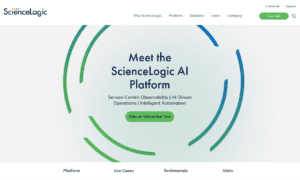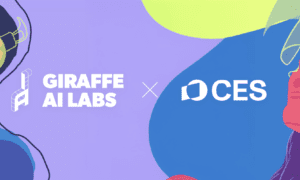Welcome to the fascinating world of data processing! In today’s tech-driven era, terms like fog computing and cloud computing have become buzzwords in the industry. But what exactly sets them apart? Join us as we pull back the curtain and delve into the intriguing realms of fog and cloud computing. Get ready to unravel their unique features, benefits, and limitations as we uncover how these two innovative technologies differ in processing data. Whether you’re a tech enthusiast or simply curious about cutting-edge advancements, this blog post promises to be an enlightening journey through the intricacies of fog and cloud computing.
Introduction to Fog Computing and Cloud Computing
Fog computing is a term for data processing that occurs at or near the edge of a network, where data is generated. By contrast, cloud computing involves data processing that takes place in a remote central location.
Fog computing has become increasingly popular in recent years as the internet of things (IoT) has created a need for real-time processing of large amounts of data. Fog computing can help reduce latency and improve performance by bringing data processing closer to where it is needed.
Cloud computing, on the other hand, offers the advantage of economies of scale. Data can be processed more cheaply and efficiently in a central location when it is not constrained by the need for real-time processing.
The two approaches are not mutually exclusive; in fact, they can be used together to create a hybrid solution that combines the best of both worlds. However, it is important to understand the difference between fog and cloud computing in order to make the best use of each one.
How Fog and Cloud Computing Differ
Fog and cloud computing differ in the way they process data. Fog computing is a decentralized system that processes data at the edge of the network, while cloud computing is a centralized system that processes data in the cloud.
Fog computing has several advantages over cloud computing. First, fog computing can provide real-time data processing, which is essential for applications such as video streaming and gaming. Second, fog computing can reduce latency since data does not need to be sent to the cloud for processing. Third, fog computing can improve security since data is processed at the edge of the network and is not stored in the cloud.
Cloud computing also has several advantages over fog computing. First, cloud computing can provide scalability since it can easily add more resources when needed. Second, cloud computing can provide flexibility since it can be used for a variety of applications. Third, cloud computing can be cheaper than fog computing since it does not require expensive hardware at the edge of the network.
Advantages of Fog Computing
Fog computing has many advantages over cloud computing when it comes to processing data. Fog computing is able to process data much faster than cloud computing because it is closer to the data source. This means that fog computing can provide real-time insights into data, whereas cloud computing can only provide insights after the data has been processed.
Another advantage of fog computing is that it is more secure than cloud computing. Fog computing distributes data processing across multiple devices, so if one device is compromised, the others can still process data securely. Cloud computing, on the other hand, processes all data in one central location, so if that location is compromised, all of the data is at risk.
Fog computing is more scalable than cloud computing. Because fog computing distributes data processing across multiple devices, it can easily scale up or down as needed. Cloud computing, on the other hand, often experiences bottlenecks when trying to scale up or down because all of the data processing must be done in one central location.
Advantages of Cloud Computing
Cloud computing offers many advantages over traditional on-premise data processing solutions. Perhaps the most significant advantage is scalability; cloud providers can easily add or remove capacity as needed to support changing demand. This flexibility is especially valuable for organizations with highly variable or seasonal workloads.
Another key advantage of cloud computing is its pay-as-you-go pricing model, which allows organizations to only pay for the resources they use. This can lead to significant cost savings compared to traditional data processing solutions, which often require upfront investments in hardware and software licenses.
Additionally, cloud computing can provide a more reliable and robust solution than on-premise data processing, as cloud providers invest heavily in ensuring their infrastructure is always available and scalable. This can give organizations peace of mind that their data processing needs will always be met, even in the event of unexpected spikes in demand.
Disadvantages of fog computing
There are a few disadvantages of fog computing to be aware of. One is that because fog nodes are typically located at the edge of a network, they can be more vulnerable to attacks. Another downside is that managing and deploying a fog computing system can be more complex than managing a traditional cloud-based system due to the distributed nature of fog computing. Fog computing can introduce latency into a system as data must travel from the edge devices to the centralized fog node before being processed and forwarded to the cloud.
Disadvantages of cloud computing
There are several disadvantages to cloud computing that should be considered before using this type of processing power. One disadvantage is the potential for data breaches. Cloud computing systems are often less secure than on-premises systems because they are accessible from anywhere in the world and often have weaker security controls. In addition, cloud providers may not have adequate security measures in place to protect customer data. Another disadvantage of cloud computing is the risk of outages. When a cloud provider has an outage, customers may lose access to their data or applications. Outages can be caused by hardware or software failures, natural disasters, or human error. Cloud computing can be more expensive than on-premises solutions because customers typically pay for services on a pay-as-you-go basis. This can result in higher costs over time if usage increases.
When to Use Each System
There are benefits and drawbacks to both fog computing and cloud computing. It is important to understand when each system should be used in order to take advantage of its strengths and avoid its weaknesses.
Fog computing is best suited for applications that require low latency or high bandwidth. This is because fog computing brings the data processing closer to the edge of the network, where it can be accessed more quickly. Fog computing is also a good choice for applications that require real-time data processing, such as video streaming or voice over IP (VoIP).
Cloud computing, on the other hand, is better suited for applications that can tolerate some latency and do not require high bandwidth. This is because cloud computing moves the data processing further away from the edge of the network, where it may take longer to access. However, cloud computing offers many advantages over fog computing, such as scalability and flexibility.
Conclusion
As we can see, fog and cloud computing are two distinct technologies with their own set of advantages and disadvantages. While they both utilize the internet to process data, fog computing has an edge when it comes to latency and security since it runs on local networks rather than a centralized cloud. Despite this, cloud computing continues to be the most popular option due to its scalability and cost-effectiveness. In any case, understanding how these two technologies work is essential for anyone looking to optimize their digital infrastructure.



































